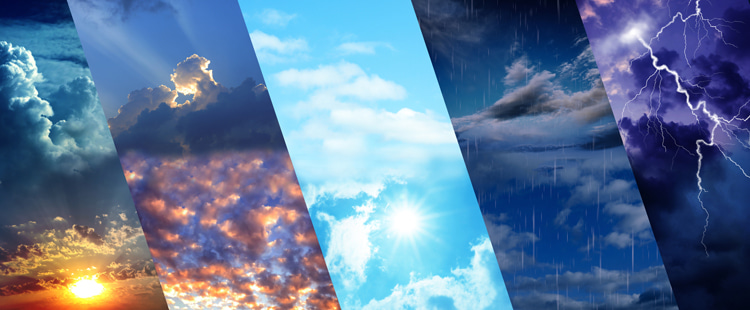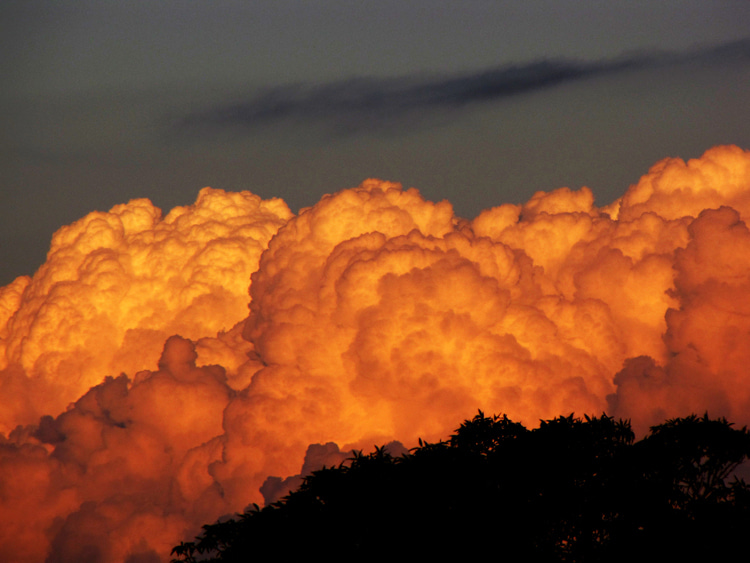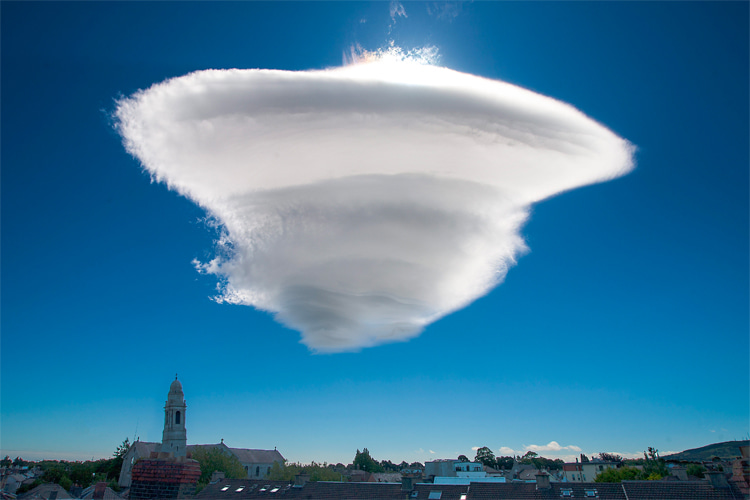Have you ever looked up at the sky and marveled at the ever-changing canvas of clouds?
These magnificent formations are not only a visual treat but also hold a treasure trove of fascinating secrets that influence our planet in countless ways.
Join us on a captivating journey as we explore the intriguing world of clouds, their interaction with the ocean, and their connection to Earth's crust.
Prepare to be amazed by the dynamic role these celestial creations play in our ecosystem, from shaping weather patterns to influencing global temperatures.
Get ready to discover 50 fascinating facts about clouds that will inspire you to see them in a whole new light.

-
Clouds are made up of tiny water droplets or ice crystals suspended in the atmosphere.
-
The three main types of clouds are stratus, cumulus, and cirrus, classified by their shape and altitude.
-
The highest clouds, known as noctilucent clouds, occur around 50 miles (80 kilometers) above the Earth's surface and are visible during twilight.
-
Clouds play a significant role in the Earth's energy balance by reflecting sunlight back into space and trapping infrared radiation emitted by the Earth's surface.
-
The amount of water vapor in the atmosphere determines cloud formation, which in turn affects global temperatures and precipitation patterns.
-
Clouds can travel at speeds of up to 100 miles per hour (160 kilometers per hour), depending on the altitude and weather conditions.
-
Cumulonimbus clouds, associated with thunderstorms, can reach heights of up to 60,000 feet (18.2 kilometers), making them the tallest of all cloud types.
-
Clouds help to moderate Earth's temperature by reflecting solar radiation during the day and trapping heat at night.
-
Contrails are artificially induced clouds that form when the hot, moist exhaust from airplanes condenses in the cold upper atmosphere.
-
Mammatus clouds, named for their resemblance to mammary glands, are pouch-like formations that typically occur with severe thunderstorms.
-
The average cloud droplet is about 0.02 millimeters in diameter, roughly 50 times smaller than a raindrop.
-
When warm air rises, it cools and condenses, forming clouds through a process known as adiabatic cooling.
-
Ocean surface temperatures affect cloud formation, as warmer water evaporates more quickly and contributes to increased atmospheric moisture.
-
Evaporation from the ocean provides approximately 90 percent of the moisture in the atmosphere, which contributes to cloud formation.
-
Earth's crust can affect cloud formation through the release of aerosols from volcanic eruptions, which serve as cloud condensation nuclei.
-
The color of clouds is influenced by the size of their water droplets and ice crystals, as well as the angle of sunlight.
-
Clouds can appear red, orange, or pink during sunrise and sunset due to the scattering of sunlight by the atmosphere.
-
Fog is a type of stratus cloud that forms close to the Earth's surface, typically when warm, moist air encounters cooler ground or water.
-
The study of clouds and their role in the Earth's atmosphere is known as nephology.
-
Cloud seeding is a method of weather modification that involves injecting substances into clouds to encourage precipitation.
-
The phrase "every cloud has a silver lining" is derived from the fact that the edges of clouds can appear silver when illuminated by sunlight.
-
The term "mare's tail" refers to cirrus clouds that resemble the tail of a horse due to their wispy, feathery appearance.
-
The ocean's salinity can influence cloud formation, as salt particles can act as cloud condensation nuclei.
-
Orographic clouds form when moist air is forced to rise due to a physical barrier, such as a mountain range.
-
Lenticular clouds are lens-shaped clouds that form over mountain peaks and are often mistaken for UFOs due to their distinctive appearance.

-
Morning Glory clouds are rare, roll-like cloud formations that can stretch for hundreds of miles. These unique meteorological phenomena are primarily observed in northern Australia, where they form due to specific atmospheric conditions and local topography.
-
Pyrocumulus clouds form as a result of intense heat from wildfires or volcanic eruptions, causing the air to rise and condense rapidly.
-
Kelvin-Helmholtz clouds, also known as "billow clouds," resemble breaking ocean waves and form when two layers of air move at different speeds.
-
Cloud streets are long, parallel rows of cumulus clouds that form as a result of convection currents in the atmosphere.
-
Cloud iridescence is a colorful optical phenomenon that occurs when sunlight is diffracted by water droplets or ice crystals in clouds, producing a rainbow-like appearance.
-
The Coriolis effect, caused by Earth's rotation, influences cloud formation and movement, particularly in large-scale weather systems like hurricanes and cyclones.
-
Trade winds, which blow predominantly from the east in tropical regions, help to transport moisture and influence cloud patterns.
-
The Intertropical Convergence Zone (ITCZ) is a region near the equator where trade winds converge, creating a band of clouds and frequent thunderstorms.
-
El Niño, a periodic warming of the Pacific Ocean, can disrupt global weather patterns and influence cloud distribution.
-
La Niña, the counterpart to El Niño, is characterized by cooler-than-normal ocean temperatures and can also affect cloud patterns and precipitation.
-
Clouds can produce a variety of precipitation types, including rain, snow, sleet, hail, and freezing rain, depending on temperature and atmospheric conditions.
-
The Bergeron process, named after Swedish meteorologist Tor Bergeron, explains how ice crystals grow at the expense of surrounding water droplets in mixed-phase clouds, eventually leading to precipitation.
-
The term "virga" refers to precipitation that evaporates before reaching the ground, often visible as streaks extending from the base of clouds.
-
Anvil clouds are the flat spreading tops of cumulonimbus clouds formed when the cloud's upward growth is halted by the tropopause, a boundary between the troposphere and stratosphere.
-
Cloud-to-ground lightning occurs when electrical discharges between the ground and a cumulonimbus cloud equalize charge imbalances.
-
The South Atlantic Anomaly, an area of reduced Earth's magnetic field, has been linked to increased cloud cover due to higher concentrations of charged particles in the atmosphere.
-
Ship tracks are cloud formations that result from the exhaust emissions of ships, which provide cloud condensation nuclei and promote cloud formation.
-
The phenomenon known as "hole-punch clouds" occurs when aircraft pass through a cloud layer, causing localized cooling and ice crystal formation, which then fall and create a hole in the cloud.
-
The term "cloud forest" refers to a type of tropical or subtropical forest characterized by persistent cloud cover, often resulting in high levels of biodiversity and endemism.
-
The Madden-Julian Oscillation (MJO) is an atmospheric wave pattern that influences cloud formation and precipitation in the tropics, with impacts on global weather patterns.
-
Contrails can contribute to climate change by trapping heat in the atmosphere, although their overall effect is still uncertain.
-
Nacreous clouds, also known as polar stratospheric clouds, form in the stratosphere at very high altitudes and contribute to the depletion of the ozone layer by providing surfaces for chemical reactions.
-
Asperitas clouds are undulating, wave-like cloud formations that were officially recognized as a new cloud type by the World Meteorological Organization (WMO) in 2017.
-
Clouds can influence the carbon cycle, as they help transport carbon dioxide and other greenhouse gases between the atmosphere, land, and ocean.
-
The study of ancient cloud patterns and their impact on Earth's climate is known as paleoclimatology. This field of research involves analyzing geological and environmental records to reconstruct past cloud behavior, providing valuable insights into the long-term evolution of Earth's atmosphere and climate.
